
Roots
The sun, a constant and powerful presence in ancient Egypt, dictated not only the rhythms of life but also the very intimate ways people cared for themselves. Consider the pervasive warmth, the dry air, and the ever-present sand; these environmental factors shaped every decision, particularly when it came to something as exposed as hair. It was a matter of comfort, cleanliness, and indeed, social standing.
The Egyptians, with their profound understanding of their surroundings, developed practices that were both practical and deeply symbolic, reflecting a holistic approach to well-being that resonates even today. They sought harmony with their environment, recognizing that personal presentation was an outward sign of inner order and a connection to the divine.
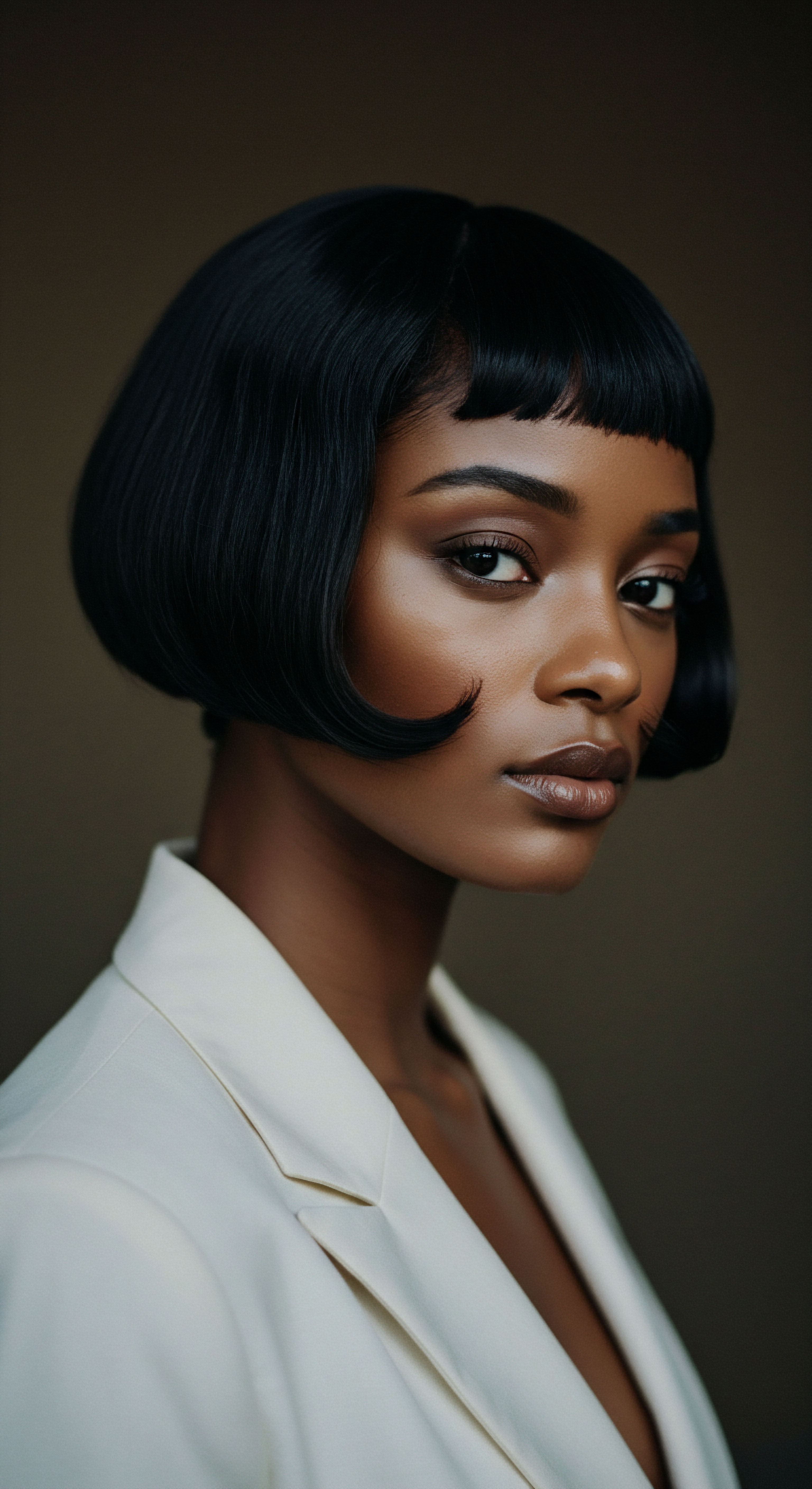
Hair as a Symbol of Life and Status
In ancient Egypt, hair was never merely a physical attribute; it held profound significance, acting as a clear indicator of Gender, Age, and Social Standing. From the earliest dynasties, the appearance of one’s hair or wig communicated volumes about their place within the structured society. The elite, for instance, could afford elaborate wigs and the luxury of maintaining long natural hair, signifying their leisure and access to dedicated attendants for grooming.
Conversely, working classes often kept their hair short or shaved for practicality in the heat and to avoid lice infestations. This distinction was not just about aesthetics; it was a visual code, deeply embedded in the societal fabric.
The symbolic weight of hair extended into spiritual realms as well. It was believed to represent vitality and the essence of life itself, perhaps because of its continuous growth, even after death. This connection meant that hair rituals were often tied to significant life transitions, from childhood to adulthood, and even into the afterlife. Mourning, for example, was frequently marked by disheveled hair or the ritualistic pulling of locks, a poignant expression of sorrow.
Ancient Egyptians saw hair as a mirror reflecting one’s identity, social standing, and connection to the sacred.
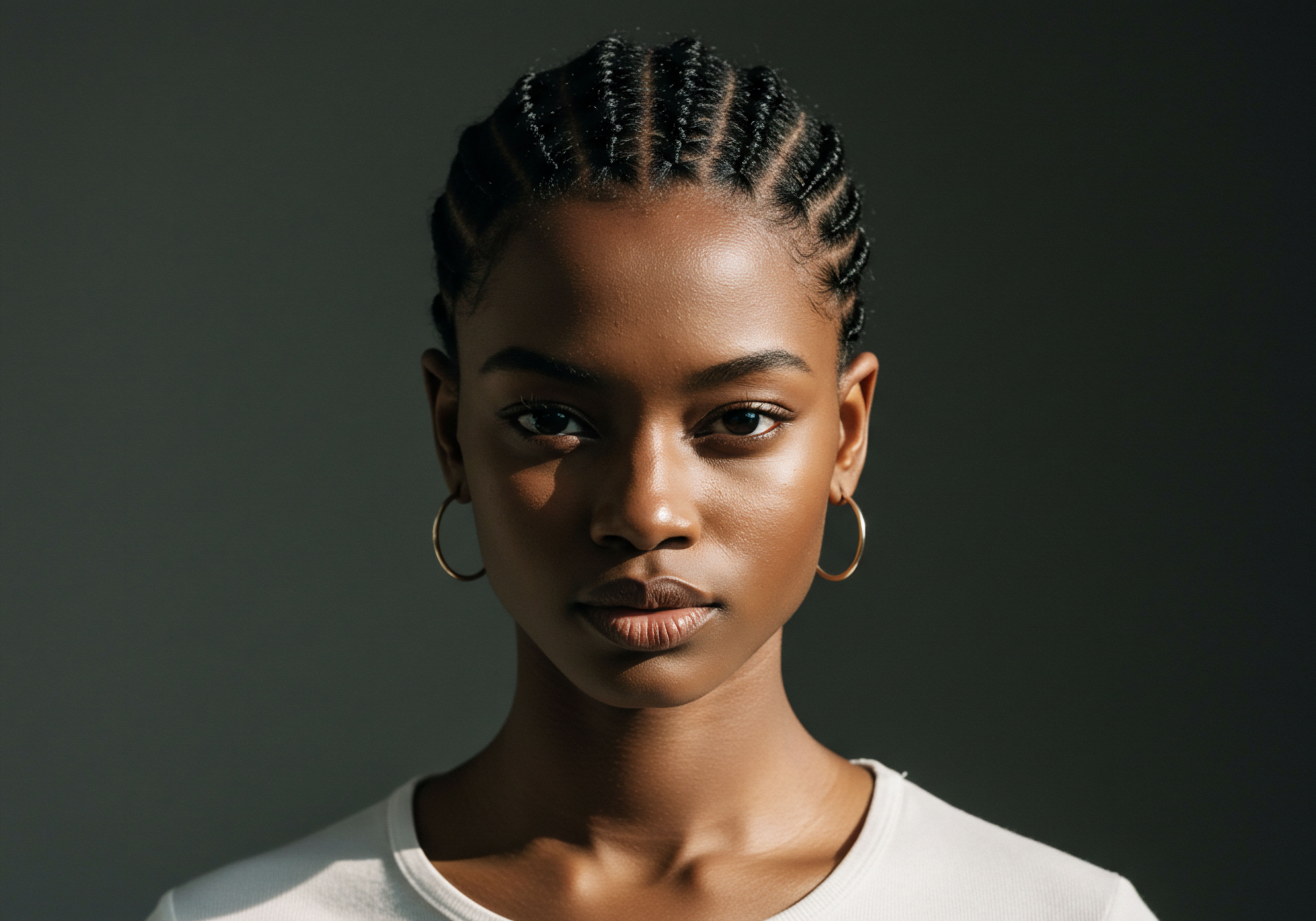
Environmental Demands and Early Solutions
The relentless Egyptian sun and arid climate presented significant challenges for hair maintenance. Unprotected scalps were vulnerable to sunburn, and natural hair could quickly become dusty, tangled, and a haven for pests. This environment necessitated innovative solutions, pushing the ancient Egyptians to develop practices that were both protective and hygienic.
One of the most striking adaptations was the widespread practice of Shaving Heads or keeping natural hair very short, especially among men and priests. This choice provided immediate relief from the heat and offered a direct line of defense against lice, a common concern in any densely populated ancient society. Priests, in particular, maintained a completely shaven body to ensure ritual purity, a practice that extended to their heads, eyebrows, and lashes. This hygienic measure allowed them to conduct their duties without the interference of uncleanliness.
For those who shaved, wigs became an indispensable accessory. These were not simply fashion statements; they served a crucial practical purpose, offering a layer of insulation against the sun’s harsh rays while simultaneously allowing body heat to escape through their mesh-like foundations. The development of wigs thus stands as a testament to the Egyptians’ ingenuity in adapting to their climate, transforming a practical necessity into a sophisticated art form.
| Adaptation Head Shaving |
| Primary Purpose Thermal comfort, hygiene, lice prevention |
| Social Implication Common for men, priests (ritual purity), laborers (practicality) |
| Adaptation Wig Wearing |
| Primary Purpose Sun protection, cleanliness, style, status display |
| Social Implication Elite access, symbol of wealth and social standing |
| Adaptation Short Haircuts |
| Primary Purpose Ease of maintenance, heat management |
| Social Implication Prevalent among working classes and children |
| Adaptation These foundational practices illustrate the ancient Egyptians' resourceful responses to their climate. |
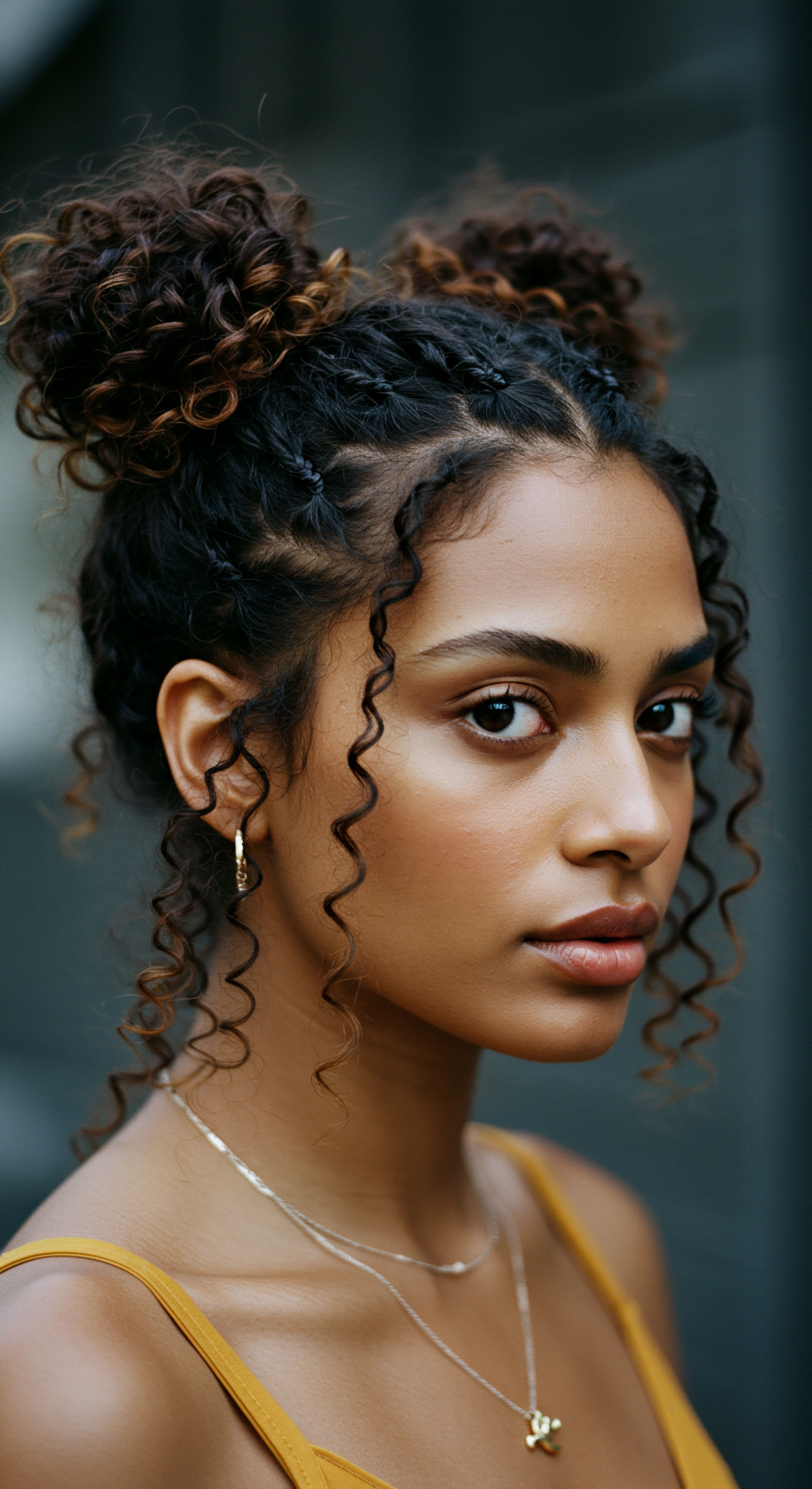
Natural Hair Care Basics
Even with the widespread use of wigs, the Egyptians still cared for their natural hair. Regular washing was a part of their routine, although the frequency remains unknown. They used natural substances for cleansing, with archaeological evidence suggesting the use of clay as a gentle cleanser that removed impurities without stripping the hair’s natural oils.
To keep their hair and scalps healthy, a variety of oils derived from plants were regularly applied. Castor Oil, Almond Oil, and Moringa Oil were particularly favored for their nourishing and moisturizing properties. These oils were believed to promote hair growth, add shine, and provide protection against environmental damage. The practice of oiling was not just for appearance; it was a prophylactic measure against dryness and damage from the arid conditions.
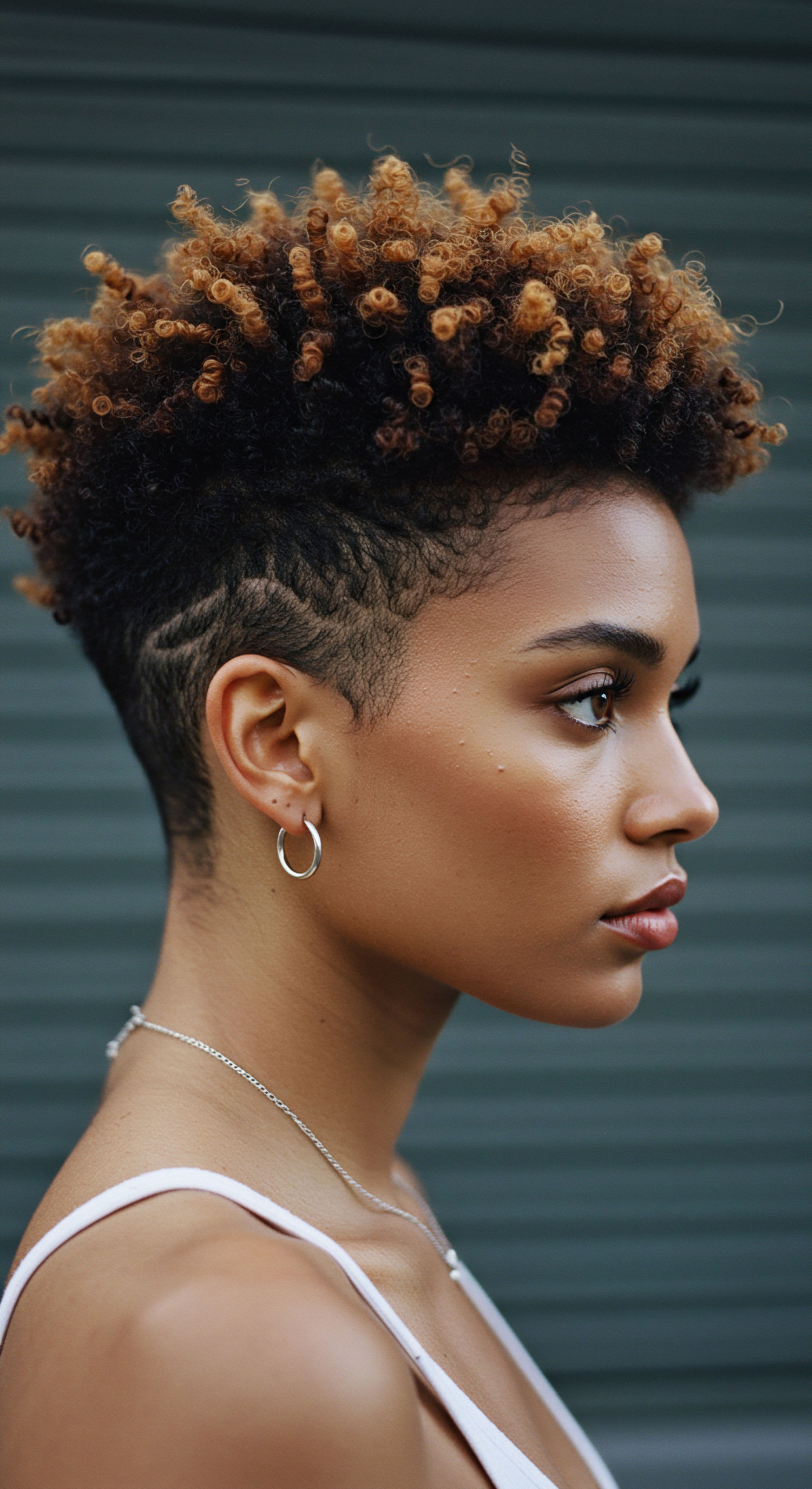
Ritual
As we step beyond the foundational practices, a deeper understanding of ancient Egyptian hair maintenance unfolds, revealing not just functional solutions but also deeply ingrained rituals. These practices, far from being mere chores, were imbued with intention, linking personal well-being to broader cultural values and daily life. The careful selection of ingredients, the deliberate styling, and the protective measures taken speak to a profound connection with self and environment, transforming routine into a meaningful observance. This section peels back the layers, exploring the artistry and scientific intuition that shaped their daily hair regimens.

The Craft of Wig Making and Styling
Wigs in ancient Egypt were more than simple coverings; they were elaborate creations, often reflecting the wearer’s social standing and personal style. Crafted from human hair, sometimes augmented with plant fibers or even sheep’s wool, these pieces required considerable skill to produce. The meticulous process involved creating a mesh-like foundation from plaited hair, then fixing individual strands or braids onto this base. To ensure styles held firm in the warm climate, wigmakers employed a setting mixture.
A significant archaeological discovery sheds light on this practice ❉ research on mummified hair samples, including those from the Dakhleh Oasis cemetery, revealed the consistent presence of a fat-based substance. This “hair gel,” composed of biological long-chain fatty acids like palmitic and stearic acid, was used to mold and hold hairstyles in place, not only in life but also in death, signifying its importance as a beauty product and a component of funerary rites. The melting point of the beeswax and conifer resin mixtures used in wig construction, around 60°-65°C (140°-149°F), indicates a deliberate choice of materials capable of withstanding Egypt’s extreme heat.
The styles themselves were diverse, ranging from short bobs to elaborate tripartite arrangements for women, and short, cropped looks or ornate layered wigs for men. Hair extensions were also common, either integrated into natural hair or added to wigs to enhance thickness and volume, a practice still popular today. These extensions, along with decorative combs and hairpins, speak to a culture that valued aesthetic refinement.
Wigs were a cornerstone of ancient Egyptian hair care, serving both practical and aesthetic purposes in the challenging desert environment.
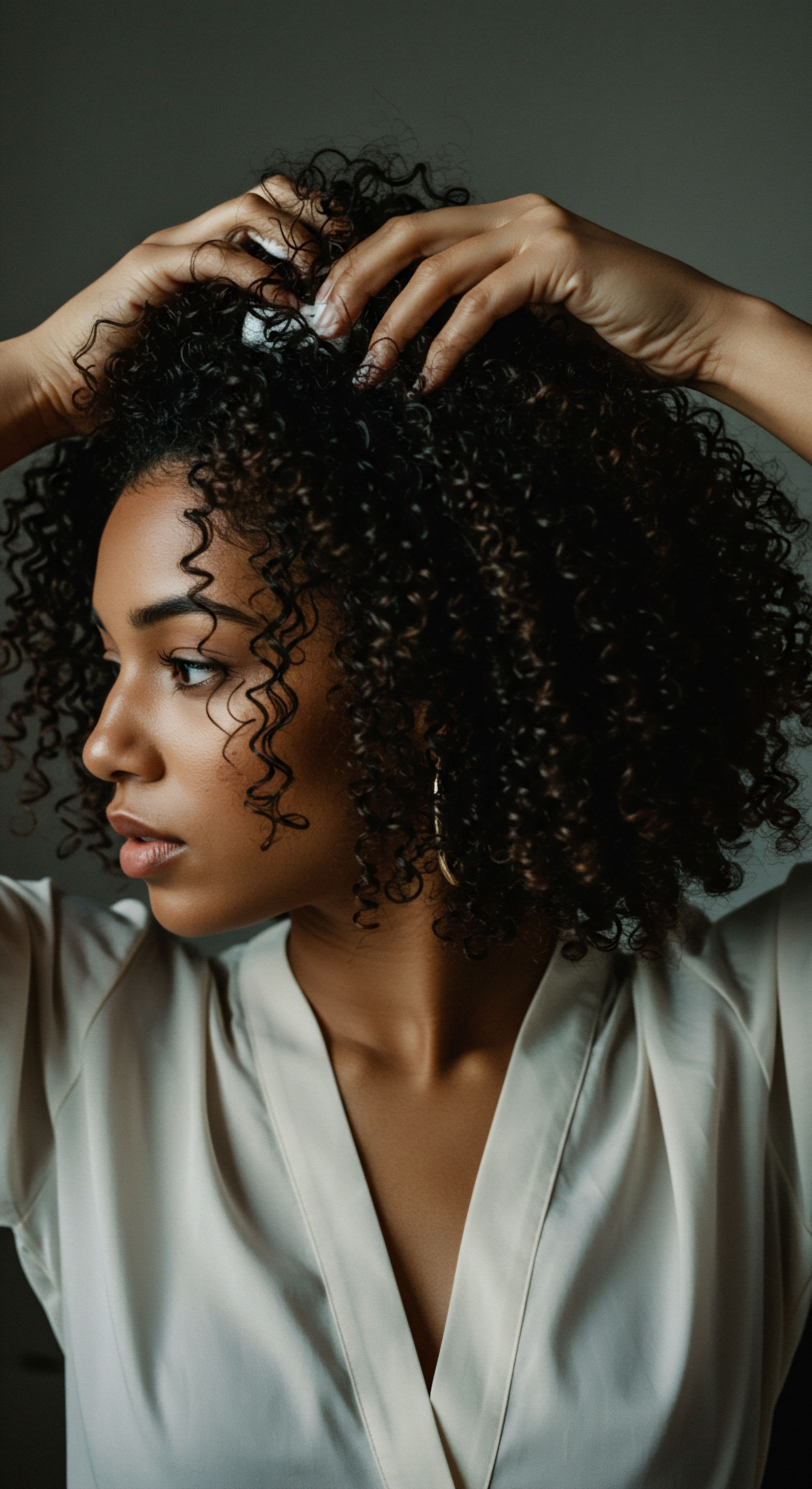
Daily Care and Natural Formulations
Beyond the grand statements of wigs, daily hair care involved a regimen focused on nourishment and scalp health. The Egyptians utilized a range of natural ingredients, transforming them into balms, oils, and rinses.
- Castor Oil ❉ Widely used for its moisturizing properties, it was massaged into the scalp to promote hair growth and strengthen follicles. Some treatments involved warm oil applications, suggesting an understanding of heat’s ability to aid absorption.
- Almond Oil ❉ Applied for its softening and smoothing effects, often combined with other ingredients to create hair masks.
- Moringa Oil ❉ Revered as a “miracle oil,” its lightweight texture and rich antioxidant content were valued for nourishing the scalp and supporting overall hair health.
- Honey ❉ Frequently mixed with oils for its humectant properties, drawing moisture to the hair and scalp, contributing to softness and shine.
- Henna ❉ Derived from the Lawsonia plant, henna was used as a natural dye to color hair, cover gray strands, and impart a reddish tint. Beyond color, it was appreciated for its conditioning qualities, strengthening the hair.
- Fenugreek and Aloe Vera ❉ These herbs were incorporated into treatments for their purported benefits in stimulating growth and providing hydration.
These natural ingredients, often blended with animal fats, created rich emollients that kept hair moisturized, shielded it from the sun, and acted as deterrents against lice. The focus was on maintaining the hair’s integrity against the drying effects of the desert, ensuring it remained pliable and healthy.

Hygiene and Cleansing Practices
Cleanliness held significant importance in ancient Egyptian society, extending to personal hygiene. While the exact frequency of hair washing remains uncertain, it was a recognized practice. The concept of “soap” as we know it did not exist, but Egyptians created cleansing agents.
They utilized Natron, a naturally occurring salt mixture found in the Wadi El Natron, which, when combined with oils, could undergo a saponification process to create a soap-like substance. This allowed for effective removal of dirt and oil from the hair and scalp.
The use of combs, often made from wood or bone, was essential for detangling and distributing oils evenly through the hair. Some combs were finely crafted with long grips, designed to aid in cleaning and potentially remove insects. This combination of natural cleansers and careful mechanical grooming ensured that hair, whether natural or wig, remained in a state of cleanliness.

Relay
Moving beyond the practical applications, the ancient Egyptian approach to hair care unveils a sophisticated interplay of science, social convention, and spiritual belief. It is here, in the convergence of these elements, that we truly grasp the depth of their ingenuity. The choices they made about their hair were not isolated acts of vanity but rather deeply embedded cultural statements, each strand and style carrying layers of meaning. This section invites us to consider the underlying rationales, the subtle signals, and the enduring legacy of their practices, revealing a society that understood the power of appearance on multiple dimensions.

How Did Hair Treatments Reflect Social Hierarchy?
The distinctions in hair practices among ancient Egyptians were stark and served as a powerful visual representation of their stratified society. While all Egyptians sought cleanliness and comfort, the means to achieve these, and the resulting aesthetic, varied significantly with social status. The elite, including royalty and high-ranking officials, enjoyed the privilege of elaborate wigs and the resources to maintain them.
These wigs, often made of human hair, were costly and required skilled artisans to create and care for. Their complexity and quality served as undeniable markers of wealth and power.
For instance, studies of tomb chapels from around 1480 to 1350 BCE show how hair depicted social stratification. High-ranking male officials commissioned these chapels to present idealized versions of their families. Both men and women of the elite wore wigs, beneath which men typically kept their natural hair short or shaven, while women maintained long hair.
This stark contrast highlights the deliberate choice to wear wigs as a symbol of leisure and the ability to command others’ services for grooming. Sons of elite men, holding junior rank, were often depicted with shorter, round wigs or shaven heads, subtly communicating their lesser status.
In contrast, non-elite individuals, particularly those working outdoors, were frequently depicted with their natural hair, often cropped short for practicality. This pragmatic approach allowed them to cope with the heat and dirt of daily labor. The visual distinction between the opulent wigs of the wealthy and the simpler, natural styles of the working class underscored the societal hierarchy.

What Scientific Insights Underpinned Ancient Egyptian Hair Care?
The ancient Egyptians, though lacking modern scientific instruments, possessed an intuitive understanding of chemistry and biology that informed their hair care. Their selection of ingredients was not arbitrary; it was based on observable effects and, in some cases, surprisingly effective properties.
Consider the widespread use of Fat-Based Products for styling and conditioning. A study published in the Journal of Archaeological Science by Natalie McCreesh and colleagues analyzed hair samples from 18 mummies, some as old as 3,500 years. The researchers found that nine of these mummies had hair coated in a substance containing biological long-chain fatty acids, such as palmitic and stearic acid.
This discovery suggests that ancient Egyptians used a styling product, akin to a modern hair gel, to maintain their intricate hairstyles in both life and death. This indicates a sophisticated understanding of how fats could provide hold and sheen, protecting hair from the arid environment.
The inclusion of ingredients like Castor Oil and Moringa Oil further speaks to their knowledge. Castor oil, rich in ricinoleic acid, possesses anti-inflammatory and antimicrobial properties that would have been beneficial for scalp health in a hot, dusty climate. Moringa oil, known for its antioxidants and fatty acids, would have offered deep nourishment and protection against environmental stressors.
Their reliance on natural substances like henna not only for color but also for its conditioning and strengthening attributes demonstrates an empirical approach to hair wellness. Henna binds to the keratin in hair, offering a protective layer that can improve hair’s resilience against breakage.
Furthermore, the strategic use of wigs with mesh foundations allowed for airflow, providing a cooling effect distinct from solid head coverings. This simple design choice highlights an understanding of thermal regulation in an extreme climate. Their methods, while developed through observation and tradition, often aligned with principles we now understand through modern trichology and cosmetic chemistry.
Ancient Egyptian hair care practices, while rooted in tradition, often revealed an empirical grasp of natural properties and environmental adaptation.

Hair and the Afterlife
The significance of hair in ancient Egypt extended beyond earthly life, playing a meaningful role in funerary practices and the journey to the afterlife. Egyptians believed that personal appearance, including hair, was crucial for successful rebirth and entry into the realm of the gods.
Archaeological findings consistently support this belief. Wigs, hair extensions, and even preserved natural hair samples have been discovered in tombs, indicating that great care was taken to ensure the deceased’s appearance was maintained for eternity. The “hair gel” found on mummified hair samples suggests that embalming processes were adapted to preserve hairstyles, ensuring the individual’s identity was retained even in death.
The presence of hair accessories like combs, hairpins, and mirrors among tomb goods further underscores the enduring importance of hair grooming in the afterlife. These items were not merely decorative; they were believed to be necessary for the deceased to present themselves appropriately in the next world. This deep connection between earthly beauty rituals and the spiritual journey highlights the holistic worldview of the ancient Egyptians, where every aspect of life, including hair care, was intertwined with their profound beliefs about existence and beyond.
| Ingredient Fat-based Substances (e.g. animal fats, beeswax) |
| Ancient Egyptian Use Styling, holding, conditioning, sun protection |
| Modern Scientific Understanding Long-chain fatty acids provide emollience, film-forming properties for hold, and barrier protection against moisture loss. Beeswax has a high melting point, maintaining style in heat. |
| Ingredient Castor Oil |
| Ancient Egyptian Use Hair growth, strengthening, nourishment |
| Modern Scientific Understanding Rich in ricinoleic acid, known for anti-inflammatory and antimicrobial properties; moisturizes and supports scalp health. |
| Ingredient Henna |
| Ancient Egyptian Use Coloring, conditioning, strengthening |
| Modern Scientific Understanding Lawsonia inermis dye molecules bind to keratin, strengthening hair strands and offering UV protection. |
| Ingredient Moringa Oil |
| Ancient Egyptian Use Scalp nourishment, hair health |
| Modern Scientific Understanding Contains antioxidants and fatty acids, beneficial for scalp health and protection from environmental damage. |
| Ingredient Honey |
| Ancient Egyptian Use Moisturizing, revitalizing |
| Modern Scientific Understanding Natural humectant, drawing and retaining moisture in hair and skin. |
| Ingredient The Egyptians' empirical observations of natural ingredients often aligned with modern scientific principles. |

Was There a Single ‘Egyptian Hair Texture’?
When we consider ancient Egyptian hair, it is easy to default to a singular image, perhaps influenced by artistic representations. Yet, just as today, the population of ancient Egypt was diverse, encompassing a range of hair textures. While many Egyptians likely possessed dark, thick, and robust hair typical of Mediterranean populations, archaeological evidence and artistic depictions suggest a spectrum of natural hair types.
Studies on mummified remains have revealed varying natural hair colors, including instances of fair or auburn hair, challenging the notion of a universally dark-haired populace. This natural diversity meant that hair care practices, while broadly similar in principle, would have been adapted to suit individual hair characteristics. The widespread use of wigs and extensions also points to a desire to achieve idealized aesthetics that might not have been possible with natural hair alone, regardless of its inherent texture. This adaptability underscores a sophisticated understanding of hair’s malleability and the diverse needs of different hair types within their society.

Reflection
The enduring legacy of ancient Egyptian hair care invites a quiet contemplation on our own relationship with beauty, wellness, and the natural world. Their ingenious solutions, born from the harsh desert sun and a deep reverence for presentation, remind us that the quest for healthy, radiant hair is a timeless human endeavor. From the practicalities of scalp protection to the artistry of elaborate wigs, their practices reveal a profound understanding of how external care can reflect inner harmony and social identity. As we consider the ancient hands that mixed oils, styled strands, and adorned heads, we sense a connection across millennia, a shared human desire to cultivate beauty and well-being in every environment.

References
- Fletcher, J. (1995). Ancient Egyptian Hair ❉ A Study of Its Function, Style, and Significance .
- Fletcher, J. (1998). The Hierakonpolis Hair ❉ An Early Example of Hair Extensions .
- Fletcher, J. & Salamone, F. (2016). An Ancient Egyptian Wig ❉ Construction and Reconstruction. Internet Archaeology, 42.
- Lucas, A. (1930). Ancient Egyptian Materials and Industries. Edward Arnold & Co.
- McCreesh, N. Gize, A. & David, A. R. (2011). Ancient Egyptian hair gel ❉ New insight into ancient Egyptian mummification procedures through chemical analysis. Journal of Archaeological Science, 38(11), 3223-3226.
- Robins, G. (1999). The Art of Ancient Egypt. Harvard University Press.
- Robins, G. (2020). Hair, Gender, and Social Status in Ancient Egypt. JSTOR Daily .
- Speidel, M. (1990). Hairdressers and Barbers in Ancient Egypt .
- Tassie, G. (in press a). The Hairstylist and Barber in Ancient Egypt .
- El-Kasrawy, S.F. (1996). Widow & Widower in Ancient Egypt. Unpublished Thesis.
- Chun, H. S. & Park, K. M. (2013). A Study on the Hair Removal Culture of Ancient Egypt. Journal of the Korean Society of Cosmetology, 19(1), 125-134.